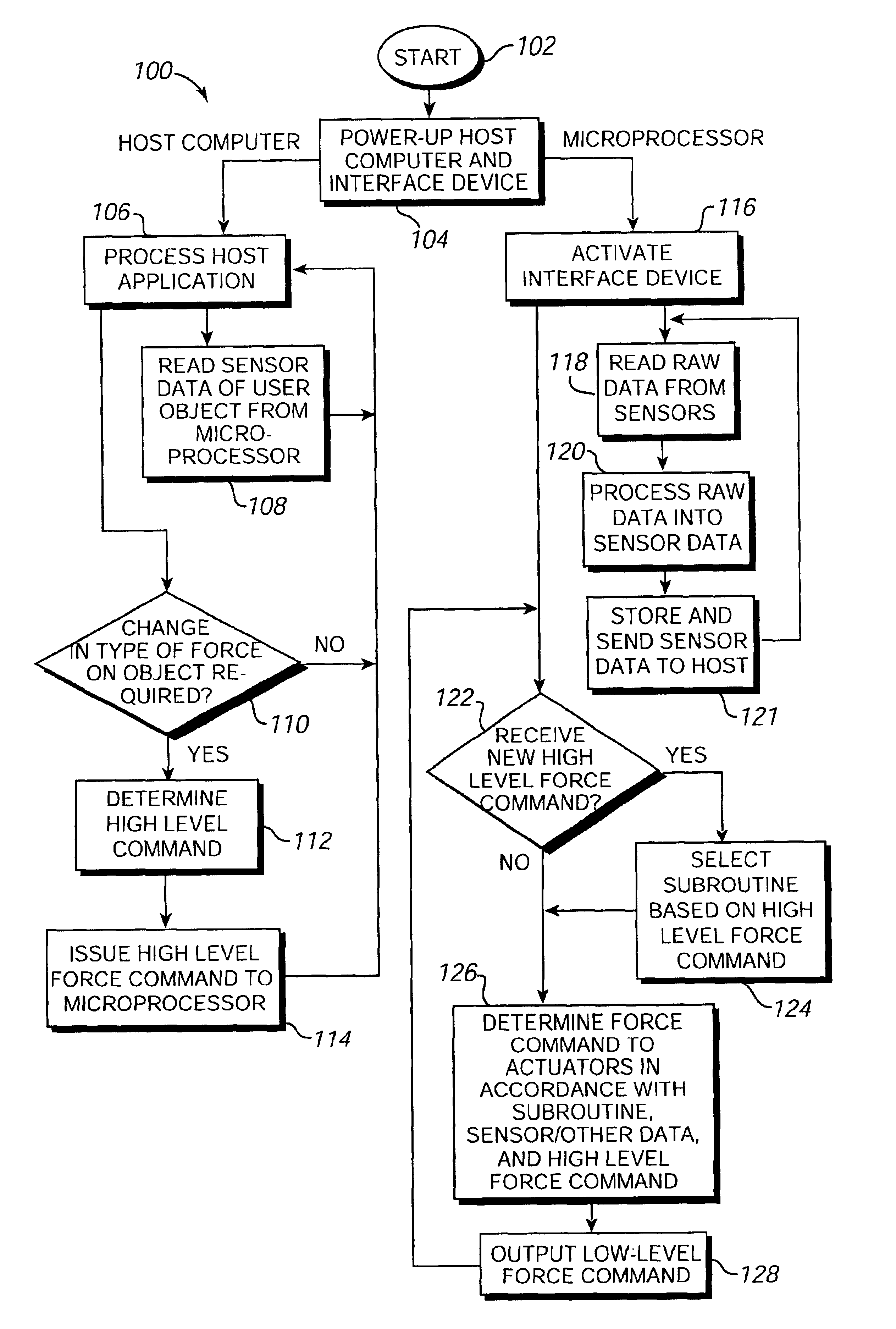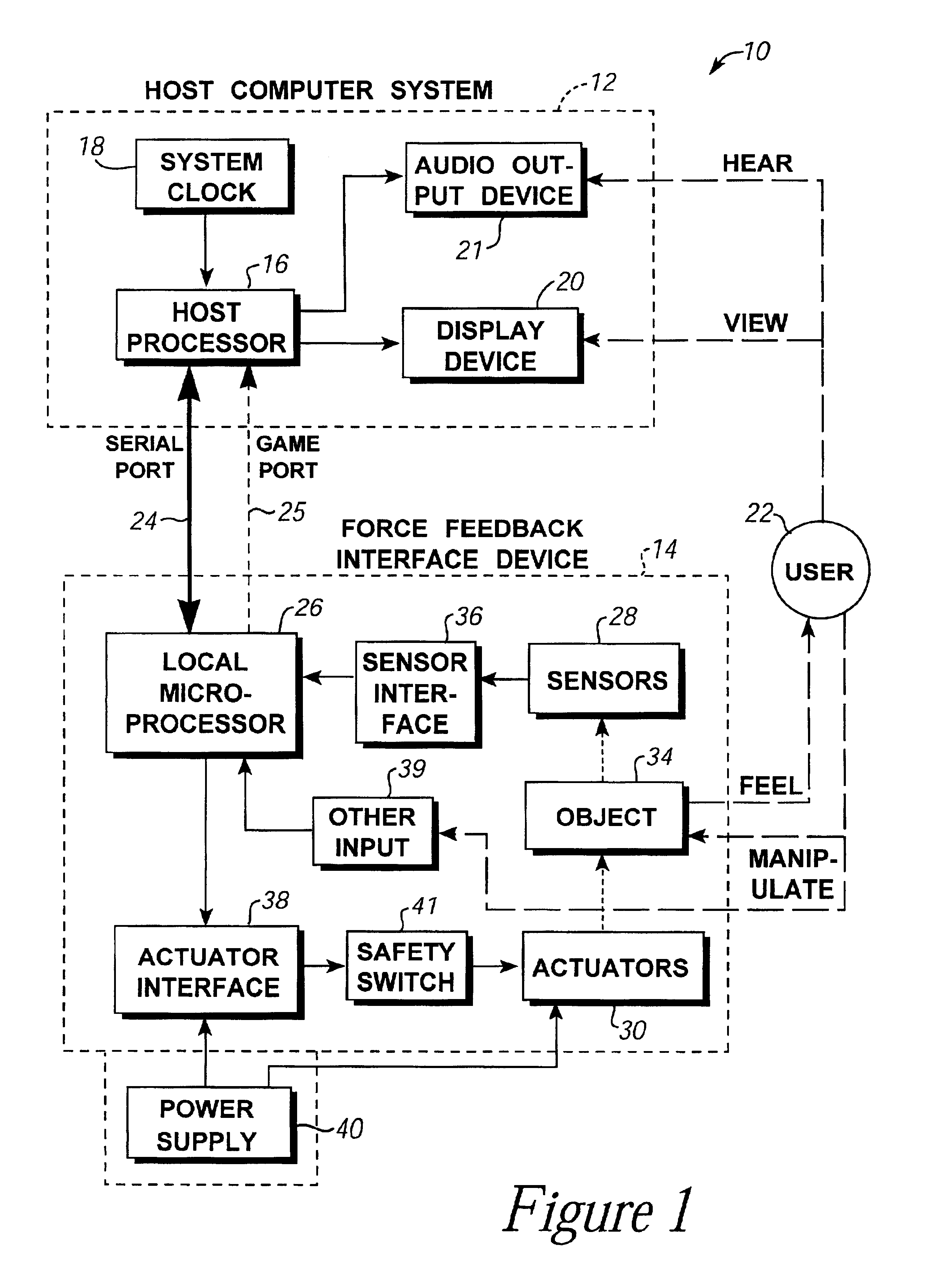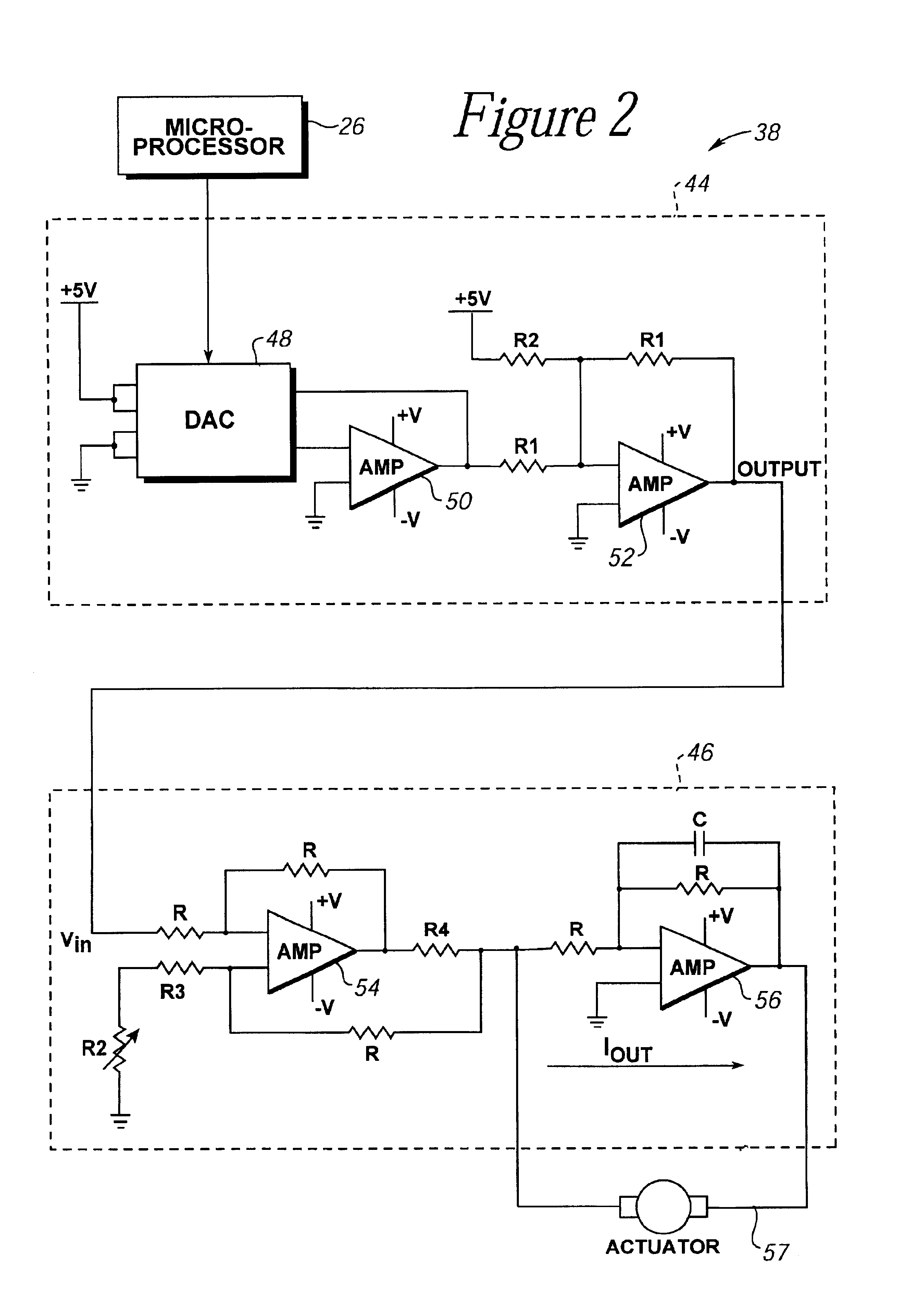Force feedback device with microprocessor receiving low level commands
a microprocessor and command technology, applied in the field of interface devices, can solve the problems of difficult to provide realistic bumpiness feeling, complex robotic mechanisms that require precision components and expensive actuators, and the general slowness of standard serial communication interfaces, so as to increase the realism and accuracy of provided forces
- Summary
- Abstract
- Description
- Claims
- Application Information
AI Technical Summary
Benefits of technology
Problems solved by technology
Method used
Image
Examples
first embodiment
[0067]FIG. 4 is a flow diagram illustrating a method 70 for controlling a force feedback interface device of the present invention. Method 70 is directed to a “host-controlled” embodiment, in which host computer system 12 provides direct, low-level force commands to microprocessor 26, and the microprocessor directly provides these force commands to actuators 30 to control forces output by the actuators.
[0068]The process begins at 72. In step 74, host computer system 12 and interface device 14 are powered up, for example, by a user activating power switches. After step 74, the process 70 branches into two parallel (simultaneous) processes. One process is implemented on host computer system 12, and the other process is implemented on local microprocessor 26. These two processes branch out of step 74 in different directions to indicate this simultaneity.
[0069]In the host computer system process, step 76 is first implemented, in which an application program is processed or updated. This...
second embodiment
[0093]FIG. 5 is a flow diagram illustrating a method 100 for controlling force feedback interface device 14 of the present invention. Method 100 is directed to a “reflex” embodiment, in which host computer system 12 provides only high-level supervisory force commands to microprocessor 26, while the microprocessor independently determines and provides low-level force commands to actuators 30 as a “reflex” to control forces output by the actuators.
[0094]The process begins at 102. In step 104, host computer system 12 and interface device 14 are powered up, for example, by a user activating power switches. After step 104, the process 100 branches into two parallel processes. One process is implemented on host computer system 12, and the other process is implemented on local microprocessor 26.
[0095]In the host computer system process, step 106 is first implemented, in which an application program is processed. This application can be a simulation, video game, scientific program, or other...
PUM
 Login to View More
Login to View More Abstract
Description
Claims
Application Information
 Login to View More
Login to View More - R&D
- Intellectual Property
- Life Sciences
- Materials
- Tech Scout
- Unparalleled Data Quality
- Higher Quality Content
- 60% Fewer Hallucinations
Browse by: Latest US Patents, China's latest patents, Technical Efficacy Thesaurus, Application Domain, Technology Topic, Popular Technical Reports.
© 2025 PatSnap. All rights reserved.Legal|Privacy policy|Modern Slavery Act Transparency Statement|Sitemap|About US| Contact US: help@patsnap.com



